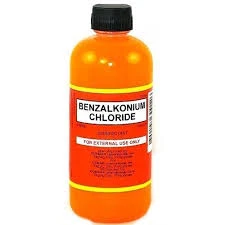Understanding the Composition and Applications of Poly Aluminum Chloride in Water Treatment
What is Poly Aluminum Chloride?
Poly Aluminum Chloride (PAC) is an inorganic polymer coagulant that is widely used in various industries, particularly in water treatment processes. This compound is composed of aluminum, chlorine, and oxygen, and it is available in different forms, including powder and liquid. PAC is recognized for its effectiveness in purifying water, making it a popular choice for municipal and industrial applications.
Chemical Composition and Structure
The chemical structure of Poly Aluminum Chloride includes multiple aluminum ions linked by hydroxy groups. The formula typically observed in PAC can be represented as \( Al_n(OH)_mCl_{3n-m} \), where 'n' represents the number of aluminum ions and 'm' the number of hydroxide ions. This unique structure enables PAC to function effectively as a coagulant, which is essential in the removal of impurities from water.
Mechanism of Action
The coagulation process involves the neutralization of charges on suspended particles in water. In the water treatment process, PAC works by aggregating these particles into larger clumps, known as flocs, which can then be easily removed through sedimentation or filtration. The effectiveness of PAC can be attributed to its high charge density and its ability to form dual charge species, which enhance the coagulation of colloidal particles and improve the overall efficiency of the water treatment process.
Applications in Water Treatment
In the realm of water treatment, PAC is predominantly used in the purification of drinking water, wastewater treatment, and even in industrial processes that require the separation of particulates. It has been proven to be particularly effective in removing turbidity, organic matter, and color from water sources. The superior performance of PAC over traditional coagulants, such as alum (aluminum sulfate), is attributed to its lower dosage requirements and its ability to operate efficiently over a broader pH range.
1. Drinking Water Purification Municipal water treatment facilities utilize PAC to ensure that the drinking water meets safety and health standards. Its effectiveness in removing micro-pollutants and pathogens is crucial in maintaining public health.
what is poly aluminum chloride

2. Wastewater Treatment In industrial settings, PAC plays a vital role in treating wastewater before it is discharged into the environment. Its ability to coagulate and settle contaminants efficiently reduces the environmental impact of industrial processes.
3. Paper and Pulp Industry The paper manufacturing industry also employs PAC as a retention aid and for removing residual ink and other impurities during the pulp processing stages.
4. Food Industry In food processing, PAC can serve as a clarifying agent in the production of juices and other beverages, helping to enhance product clarity and quality.
Environmental Impact and Safety
One of the notable advantages of using Poly Aluminum Chloride is its relatively low impact on the environment when compared to some alternatives. While all chemicals have potential environmental implications, PAC is biodegradable, and its usage tends to result in fewer harmful by-products. Moreover, PAC’s lower aluminum content reduces the risks associated with high aluminum levels that can occur with traditional coagulants.
In terms of safety, PAC is generally considered safe when handled according to safety guidelines. However, like all chemicals, it should be used with caution, and proper Personal Protective Equipment (PPE) should be worn during handling to avoid skin or eye irritation.
Conclusion
Poly Aluminum Chloride is a versatile and effective coagulant widely used in water treatment processes across various industries. Its superior coagulation efficiency, environmental benefits, and safety profile make it an essential component in ensuring clean and safe water for consumption and other applications. As industries continue to seek efficient and sustainable solutions for water treatment, the use of PAC is likely to increase, contributing to public health and environmental protection.
-
lk-319-special-scale-and-corrosion-inhibitor-for-steel-plants-advanced-solutions-for-industrial-water-systemsNewsAug.22,2025
-
flocculant-water-treatment-essential-chemical-solutions-for-purification-processesNewsAug.22,2025
-
isothiazolinones-versatile-microbial-control-agents-for-industrial-and-consumer-applicationsNewsAug.22,2025
-
scale-inhibitor-key-solutions-for-water-system-scale-preventionNewsAug.22,2025
-
organophosphonates-versatile-scale-inhibitors-for-industrial-water-systemsNewsAug.22,2025
-
scale-and-corrosion-inhibitor-essential-chemical-solutions-for-water-system-maintenanceNewsAug.22,2025





